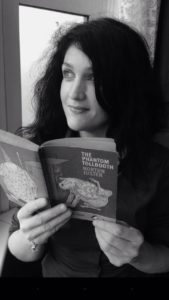What better way to kick off 2015 than with an excellent book by a mysterious writer? Italian author Elena Ferrante, whose real identity nobody knows, creates a perfect microcosm of childhood and adolescence in her book My Brilliant Friend, the first in a quartet. It’s a vibrant and violent coming-of-age story and a portrait of an intense friendship between two girls.
Lila and Lenù (short for Elena) grow up in poverty in a suburb of Naples in the 1950s. Their world consists of the baker’s, the carpenter’s, the shoemaker’s and the mad widow’s families. It stops at the end of the narrow street they live in. The sea, only a few miles away, exists only in their imagination.
Both girls are intelligent and excel at school. Lenù’s parents reluctantly let her continue to secondary school, while Lila, the brighter of the two, is forced to work in her parents shoe shop. They become obsessed with the possibility of escaping poverty, writing a bestselling book being the preferred exit route.
The story, told by Lenù, is essentially a portrait of a friendship where love and admiration is mixed with fear and jealousy. The balance of power sways, sometimes Lila is on top, at other times it’s Lenù. Who’s the brilliant friend is not easy to say. Perhaps it’s both?
This book will confirm all your stereotypical ideas about Neapolitans. Disagreements are resolved by shouting, throwing pots, pans, even people out of windows or by good old fistfights. Or as the author explains it: with ‘the logic of the neighbourhood’. Emotions run high. The honour of the family reigns supreme. Sounds violent and depressing? It’s not, actually, as it’s all done with heaps of charm and warmth. You’ll grow to love every character in this book; even the baddies have redeeming qualities.
My Brilliant Friend is essentially a coming-of-age novel, not unlike that of Karl Ove Knausgaard’s A Death in the Family (reviewed elsewhere on this blog) although Ferrante is less introspective and less preoccupied with the details of everyday life. They both have a strong autobiographical feel to them. In Knausgaard’s case we know this to be intentional, in Ferrante’s case we can only guess. There are hints though: the name of the narrator is the same at the author (although this is not real name, of course), the narrator’s dream of becoming a writer, the everyday storyline.
Just like Knausgaard, Ferrante is interested in the intensity and immediacy of childhood experiences.
Children don’t know the meaning of yesterday, of the day before yesterday, or even of tomorrow, everything is this, now: the street is this, the doorway is this, the stairs are this, this is Mamma, this is Papa, this is the day, this is the night.
Ferrante wants to shed light on the position of girls: stuck in domesticity, victims of abuse, in constant fear of losing their reputation. This feels desperately unfair, as Lila and Lenù are far brighter than most people around them, in fact their highly intellectual conversations stand in stark contrast to everyone and everything else.
In one of very few interviews, conducted through her publisher, the media shy Ferrante has said: ‘I believe that books, once they are written, have no need of their authors. If they have something to say, they will sooner or later find readers; if not, they won’t…’ As simple as that!
A person who wants anonymity is a rare thing indeed these days. As a marketing strategy it has worked wonders, though. An intentional move? Who knows?
In any case, My Brilliant Friend is a wonderful life affirming read and I can’t wait to find out what happens next to my two brilliant friends, Lila and Lenù.
PS This book should not be judged by its terrible cover. It’s honestly not what it looks like.
Links to other reviews:
James Wood in The New Yorker
Meghan O’Rourke in The Guardian
My Brilliant Friend is published by Europa Editions, 331 pages.





